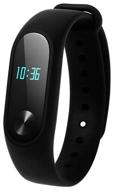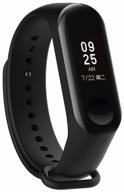
Review on 📷 Nikon AF-S FX NIKKOR 105mm f/1.4E ED Lens - Auto Focus for Nikon DSLR Cameras by Hien Kent ᠌

The quality is at the level, I am satisfied with everything.
1) For better balance, a camera with a large grip and comparable or higher weight (D810 / D4s / D5) is desirable. 2) At a focal length of 105mm, an aperture of 1.4 gives a very shallow depth of field. Hence the requirements for special accuracy and accuracy when focusing / recomposing the frame. 3) The larger the size of the front lens, the more likely it is to "catch" stray glare. Therefore, I strongly recommend wearing a hood in the case of difficult studio lighting, or when shooting in the open air. In my practice, there were no stray glare - but I always use a hood. 4) Do not compare the size and weight of this lens with optics from mirrorless cameras (the rear segment is smaller) and optics designed for smaller sensors (APS-C, 4/3) - there really optics will be smaller and lighter - everything is obvious here, the laws of physics do not bypass. 5) Yes, the price of this lens is not small. But top-end appliances from big-name brands have never been very affordable. For an affordable price tag, there is an affordable segment of photographic equipment. 6) I will not advise everyone to buy such a lens. Just for the majority, there are cheaper and easier options. And those for whom it is necessary due to professional specifics will buy it anyway. P. S. I have been doing photography almost all my life - since 1985. He sincerely shared his own impressions of a wonderful lens. Your opinion may not match mine. And that's okay. Everyone has their own depth of vision, their own evaluation criteria and their own values. I wish you all inspiration and good luck! Sincerely, Emilio Gaziyants.
- The lens focal length is between 85mm and 135mm. Accordingly, it does not compress the perspective as much as 135mm and at the same time has a more three-dimensional image than 85mm (taking into account the relative aperture of 1.4). Compared to the AF-S Nikkor 85mm F/1.4G, the new 105mm f/1.4E is superior in every way. The same, but even more true for the legendary artistic AF DC-Nikkor 135mm F / 2D. Although the essence of DC135mm F / 2D is different. There is no point in describing the specific difference between these lenses - it's easier to see with your eyes. Highlights about the AF-S Nikkor 105mm F/1.4E ED in a nutshell 1) Amazing ability to isolate the subject even from small distances from the background. 2) There is a unique aesthetic atmosphere in photography, the very "airiness" from which lovers of German optics are delighted. 3) The quality and aesthetics of the blur (bokeh) both in the foreground and in the background are on top. Blurring is even and smooth. Although it's a matter of taste. 4) Plastic. The image is endowed with a huge number of halftones and shades. 5) Very accurate color reproduction. Each color and shade is in its place - unless, of course, you initially messed with the white balance. 6) Excellent sharpness throughout the frame. At 1.4 aperture, the picture is contrasting, without strong chromaticity, with excellent elaboration of details. 7) The autofocus speed is pretty decent - given the size and weight of the lens block. I expected slower autofocus.
- 1) Weight. In professional technique, I never considered gravity as shortcomings. For in this class, everything is designed for maximum quality and the highest performance - hence the weight. This technique is highly specialized, not for lovers of "easy and convenient". 2) Plastic body (next to the bayonet, plastic is clearly audible when you click your finger) - probably for the sake of less weight and cheaper. Magnesium is certainly a light material, but still heavier and more expensive than used plastic. Nikon does not specify what kind of material is used - but it will not hold anything together, there is no backlash. 3) No stabilizer (VR). On the one hand, this can really be written down as a disadvantage. On the other hand, VR spoils the picture (bokeh) and this is not speculation. No company has an image stabilizer in portrait lenses - the exception is the new Tamron series, but the picture is not so refined there either. For those who know how to hold a camera in their hands - the lack of VR is not a problem. I am sure that in the future, engineers will be able to combine optical image stabilization technology with a gorgeous picture. 4) The lens has a minimum focusing distance of 1 meter. A little far, although within the normal range, given the focal length. And I want it to be about 80 cm. Sometimes it is necessary to get even closer to the subject / object of shooting - accordingly, this technical limitation in some cases also limits the capabilities of the photographer. 5) Size for filter 82mm. There are filters that are rare in themselves and manufacturers do not indulge in them. And finding such filters for the size of 82mm is an order of magnitude more difficult. Square filters with hinged slot holders (for example from Cokin) will help you. 6) Large size limits usability on small professional cameras (eg Nikon Df / D750) and drastically reduces the usable volume in your case.
New products
Top products in 👓 Lenses
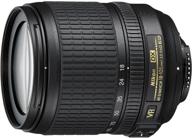
New Nikon 18-105mm Vibration Reduction 📷 Zoom Lens with Auto Focus for Nikon DSLRs

104 Review
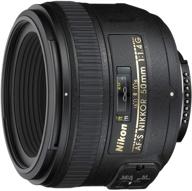
📷 Nikon AF-S NIKKOR 50mm f/1.4G Lens with Auto Focus: Perfect for Nikon DSLR Cameras

76 Review

Canon EF 40mm f/2.8 STM Lens - Fixed Black (6310B002) for US Cameras

76 Review
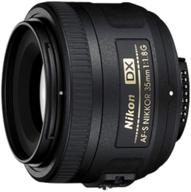
Nikon 35mm f/1.8G Auto Focus Lens for Nikon DSLR Cameras - Black (Model 2183)

125 Review





